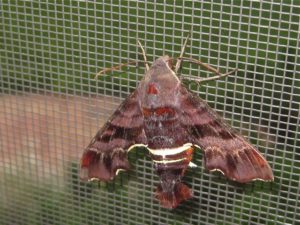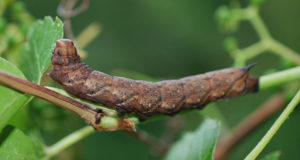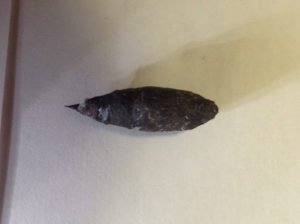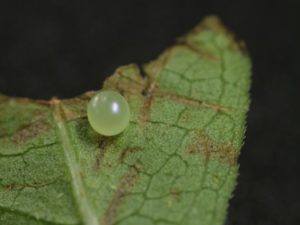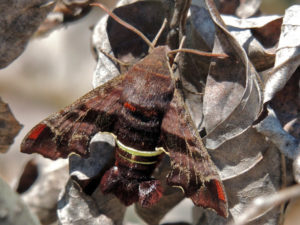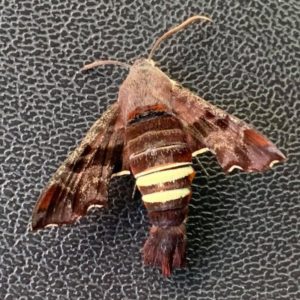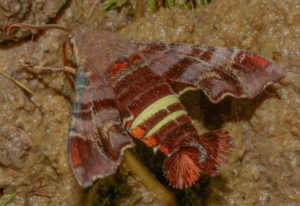Nessus Sphinx Moth (Amphion floridensis)
The Nessus sphinx moth is a member of the family of sphinx moths. It is one of the few moths that fly during the day and can be easily observed in North America.
Theirisandthelily.com
Scientific Classification
- Family: Sphingidae
- Genus: Amphion
- Scientific Name: Amphion floridensis
Description and Identification
Adult Moth
Sexual Dimorphism: Present but not prominent.
Color and Appearance
It has a stout body, with a tuft at its end and two bright yellow bands on its abdomen.
Forewings: When the wings are opened, the reddish-brown pattern of the upper side of the wings is visible. When closed, the brown bands are visible on the base, middle, and outer areas.
Hindwings: When the wings are opened and closed, a dark yellow leading edge and a reddish-orange middle band are observed.
Average wingspan: 37-55 mm
Flight pattern: Consistent
Season: April – July
Quick Facts
| Distribution | Eastern US, Canada, and south of Mexico |
| Habitat | Forests, streamsides, and suburbs |
| Predators | Birds |
| Lifespan of Adults | Not recorded |
| Host Plants | Capsicum, peppervine, and grapevine |
| Adult Diet | Nectar from flowers like lilac, herbrobert, beauty bush, mock orange, and Phlox |
Did You Know
- This moth was first classified as Sphinx nessus by Dutch entomologist Pieter Cramer in 1777. However, the name was invalidated as British entomologist Dru Drury had already used it in 1773. Its current name was given in 1920 by American entomologist Benjamin Preston Clark.
Scientific Classification
- Family: Sphingidae
- Genus: Amphion
- Scientific Name: Amphion floridensis

